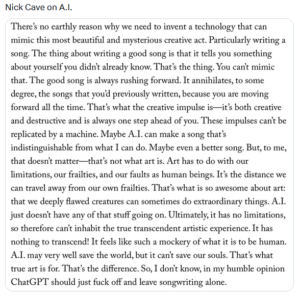Matthew Walther, What the Owner of an AR-15 Sees in Every Single Place He Goes:
Understanding the cultural appeal of AR-15-style semiautomatic rifles like those used in Nashville may not be as urgent a matter as the policy question concerning their availability. Indeed, though I generally support gun rights, I favor imposing restrictions on the manufacture and ownership of AR-15-style weapons. But the problem is deeper than the guns themselves — not just the existence of the evil people who pull the triggers but also the specific place these weapons occupy in American life and the logic by which their ownership seems justifiable to enthusiasts.
The AR-15 is situated at the intersection of a relatively innocent hobbyism and the sinister mainstreaming of features of the militia culture of the 1990s, even among people who lead law-abiding lives.
Nadya Williams, Updating Homer for Sensitive Modern Readers: A Tongue-in-Cheek Proposal:
As noted in the title, this essay is intended to be tongue-in-cheek. As a historian of the ancient world, I assure you that there is absolutely no way to sanitize antiquity properly to respect anyone’s sensibilities. The pre-Christian Greco-Roman Mediterranean, in particular, was a world filled with horrific abuses that are almost unimaginable for us, except that they are well-documented in our sources. And that is the point. Both the literary and historical past exist not for the purpose of making anyone comfortable, but to challenge us, as people living in a particular time and culture, to continue to learn about and from the human experience.
David Ho, Carbon dioxide removal is not a current climate solution — we need to change the narrative:
I have spent my career studying the natural carbon cycle and, in recent years, developing methods for checking that CDR works. I have scrutinized dozens of proposals, and I was a reviewer for the US$100-million XPRIZE Carbon Removal competition funded by the Musk Foundation. I don’t deny the need to develop CDR methods over the longer term. And I welcome governments committing much-needed resources to this area. After some small-scale demonstrations of ‘direct air capture’ (DAC) technology, which suck CO2 out of the atmosphere by chemical means, the 2022 US Bipartisan Infrastructure Law has devoted $3.5 billion to developing four DAC hubs. But it’s clear to me that deploying them to remove CO2 from the atmosphere is pointless until society has almost completely eliminated its polluting activities.
“That’s what’s so awesome about art: That we deeply flawed creatures can sometimes do extraordinary things.”

